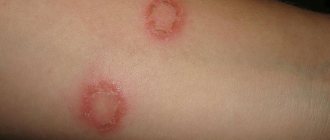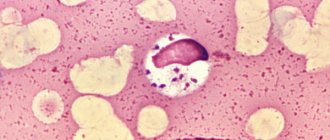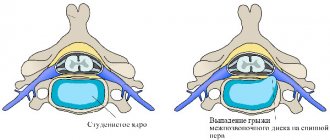Cystitis in a dog
Cystitis is a type of genitourinary tract infection that affects the bladder. Although cystitis is a problem we most often associate with humans, as well as cats, dogs can also develop cystitis, and the condition can be prone to relapses or repeated flare-ups throughout the dog's life.
If your dog seems to have recurring problems with urination or is prone to flare-ups of cystitis, it is important to gain as much insight into the condition as possible so that you can do what you can to treat it and prevent the possibility of future infections. We'll look at these factors in more detail in this article.
How does cystitis manifest in dogs?
If you've ever had a bladder infection, you know how uncomfortable it can be. Unfortunately, sometimes your pet shows no symptoms at all. In this case, you can only find out about your pet's illness when you visit a veterinarian. However, you should pay attention to the following manifestations of cystitis:
- The dog is constantly peeing. Also, urination causes pain, and there may be traces of blood in the urine. However, there are also dogs that suffer from cystitis even though they show no obvious signs of infection. Dogs that have been on steroid medications for a long period of time have been known to develop urinary tract infections without any general symptoms.
- Pain. There is less than a 5% chance that these infections will not cause pain. When pain is present, the dog may appear noticeably tense during toilet breaks. Many dog owners report that their dogs howl or cry in pain.
- Frequency of urination. Because pain is a constant symptom, some dogs do not empty their bladder when they pee. This means that there is a lot of bacteria inside their bladder that is not getting out and that can cause toxicity problems at some point.
- Pungent smell of urine. A dog suffering from cystitis will produce urine that smells like ammonia or smells foul or sour. If the smell is different from normal, it is likely due to an infection.
- Licking and chewing. This instinctive action is not useful for relieving pain and discomfort, but dogs do it anyway because they are stressed. Although occasional licking and chewing is not a problem, it is another symptom.
- Fatigue and low-grade fever. These 2 symptoms are not unique or specific to cystitis, but they are present. Recognizing them and rushing to the vet would be a plus.
Cystitis in dogs: prevention of the disease
- Clean drinking water is freely available;
- Organize more frequent walks for the animal so that the animal does not suffer for a long time. On average 3 times a day;
- Maintain comfortable conditions for keeping the animal (comfortable temperature conditions, the presence of bedding, insulation of booths and enclosures when keeping animals outdoors);
- Treatment and prevention of diseases of the reproductive system;
- Annual medical examination of geriatric (7-8+) animals;
- Monitoring the animal’s diet, especially if the animal has previously been diagnosed with urolithiasis (in such cases, it is more correct to adhere to commercial diets);
- Regular treatments against ecto- and endo-parasites; regular vaccination;
- Hygiene of the paraanal area: removal of fecal residues from the fur in the anal area, timely cleaning of the paraanal glands.
Important! Cystitis is easiest to prevent and treat at the earliest stage. The later therapy is started, the less effective it is.
Forms of the disease
Cystitis
Depending on how long it lasts, cystitis can be of two types:
- Acute cystitis. At first it is catarrhal inflammation, which may be hemorrhagic in nature depending on the cause of the injury. The dog cannot pee comfortably and experiences pain. Mild cases usually resolve completely, while others lead to a chronic form of cystitis.
- Chronic cystitis. This disease is present throughout the dog's life. The pet needs special care and therapeutic therapy. Preventing the exacerbation of cystitis is its treatment.
The causes of the disease are:
- Primary cystitis . The disease develops independently. Usually occurs due to infections in the genitourinary system.
- Secondary cystitis. Appears due to other disorders in the body.
Causes of cystitis
Inflammation of a dog's bladder or bladder wall usually occurs due to bacteria, viruses, or other infectious agents entering the pet's bloodstream. However, not only these factors cause cystitis in dogs. The disease is caused by various factors, such as:
- pelvic area injuries;
- acute or chronic kidney problems;
- chronic urinary tract infections;
- bladder stones;
- stones in the kidneys;
- tumors in the genitourinary tract;
- side effects of medications your pet is taking;
- nutrition;
- hereditary urinary tract defects
Dogs that are given certain medications, such as cyclophosphamide, may also suffer from cystitis.
Methods for treating bladder inflammation in dogs
There are the following treatments for bladder inflammation in dogs:
- If the animal cannot urinate normally, the accumulated urine is regularly removed from the organ cavity with a catheter.
- In many cases, it is necessary to rinse the bladder cavity with antiseptic solutions. To do this, they use the same catheter.
- Anti-inflammatory corticosteroids can be used to relieve the inflammatory process.
- To destroy pathogenic microflora, antibiotics and drugs from the nitrofuran group are used.
- Some veterinarians believe that during treatment of diseases of the urinary system, the pet should be provided with a diet with a reduced protein content (as this reduces the load on the kidneys). But this is a controversial issue and at present many experts believe that there is no such need.
- Severe painful attacks are relieved with painkillers and antispasmodics.
- In many cases, the prescription of diuretics is required.
Symptoms of cystitis in dogs
Incontinence in a dog with cystitis
If you notice the following symptoms, it is important to see a doctor immediately to avoid complications. They include:
- hematuria (blood in the urine, especially at the end of urination);
- strangury (strain or discomfort when urinating);
- pollakiuria (increased urination);
- incontinence;
- discomfort (as indicated by restlessness, abdominal pain, whining, or licking);
- stiffness or reluctance to move (as some dogs develop secondary “flu-like” joint pain).
Signs of cystitis
What is cystitis
Cystitis in dogs
is an inflammatory process that affects the mucous membrane of the animal’s bladder. Bitches are especially susceptible to the disease, since they have a greater chance of contracting cystitis: their urethra is shorter and wider compared to the urethra of male dogs. In addition, in females, the urethra is located close to the anus, which can also contribute to the development of cystitis. Also, bitches are at greater risk due to possible complications after gynecological diseases and difficult childbirth. But theoretically, a dog of any breed, any gender and age can get cystitis.
The disease in tailed pets occurs in both acute and chronic forms. Acute cystitis rarely goes unnoticed by the owner due to obvious symptoms. In the chronic form, the dog appears virtually healthy, and signs of cystitis appear from time to time.
Diagnosis of the disease
Your veterinarian will review your pet's medical history with you. It is a good idea to write down all the medications your pet is currently taking. A review of the pet's medical history and medications helps determine immunosuppression.
He will perform a complete physical examination of your pet, which will include palpation of the bladder. A rectal examination may be part of a physical examination to check the urethra for masses or urolithiasis that may contribute to the recurrence of cystitis. Diagnostic tests that may be performed by your veterinarian include:
- An x-ray of the abdomen will reveal common bladder stones;
- An ultrasound of the abdominal area will allow you to visualize stones, as well as tumors and polyps; it can also detect bladder wall abnormalities;
- a urine biopsy can help diagnose cancer;
- contrast radiographs may be recommended when conventional x-rays or ultrasound do not provide a diagnosis;
- a biochemical profile and complete blood count (CBC) will be done to assess metabolic and organ function;
- Cystoscopy (a camera inserted into the bladder) can help rule out anatomical abnormalities, polyps, neoplasia or urolithiasis and allows a biopsy of the mucosa.
Treatment of cystitis in dogs
Drugs for treatment
Recommendations for the treatment of cystitis are given by veterinarians at the Univet clinic:
Treatment for canine cystitis is based on the use of antibiotics to combat the causative bacteria. It is important to note that once treatment has begun, it should be continued until it is completed, even if the dog shows rapid improvement. In many cases, if treatment is stopped too early, the infection may return and the bacteria may become resistant to the drugs, making the disease more difficult.
On the other hand, if your dog is showing side effects from the antibiotic, your veterinarian should recommend other medications. Whenever a dog becomes ill, it is recommended that tests be repeated, even after antibiotic treatment has been completed, to determine whether the bacteria have been cleared from the dog's bladder to prevent relapse.
Drug treatment
The main means of treatment for cystitis are antibiotics. They are supplemented with antispasmodics to reduce pain in the dog. Most often, veterinarians prescribe:
| Drugs for the treatment of cystitis | |||
| Drug name | Dosage | Admission course | Peculiarities |
| Furadonin | 5-10 mg per 1 kg of body weight | 7 days | Divide into 2-4 doses |
| Biseptol | 10 mg per 1 kg body weight for small breeds 30 mg per 1 kg body weight for large breeds | 7 days | Divide into 2-4 doses |
| Baytril | 0.2 mg per 1 kg body weight | 3-10 days | Administer intramuscularly |
| Ceftriaxone | 30 mg per 1 kg body weight | 5-10 days | Divide into 2-3 doses |
| Canephron | 1-2 drops per 1 kg of body weight | 14 days | Apply internally |
| Cyston | 2 tablets | 1-3 months | Give 2-3 times a day |
You can see various means for treating dogs here - drugs for dogs price
Treatment with folk remedies
Home or natural remedies are not an alternative to antibiotic treatment, but they can definitely relieve cystitis. However, antibiotics are known to kill both good and bad bacteria, so it would be best for your dog not to suffer from severe cystitis and treat it only with natural remedies. Even though antibiotics can remove bacteria from a dog's body, they will weaken his body and make him more vulnerable to other diseases. It follows that there are many natural remedies for dogs with urinary tract problems.
- Herbal decoctions for better urination. To prepare moods when fighting cystitis in a pet, you should use bearberry, knotweed and horsetail. Chamomile, lemon balm and mint infusions can also help fight painful symptoms. Parsley, licorice, and St. John's wort are good against inflammation.
- Cranberry juice. Cranberry juice is not only delicious, but also has amazing qualities. It can lower the pH of your dog's urine, which is very beneficial because if the urine is acidic, it will help kill more bacteria. It is not a treatment for severe infections, but it should be effective for mild ones.
- Water. Bladder pain and inflammation are caused by infection. Thus, if a dog eliminates bacteria by urinating, there will be less of it in his body, and inflammation and pain will decrease.
- Echinacea. There are several types of Echinacea, but only 3 types have the same properties and can be used to block the effects of viruses, parasites and bacteria.
- Propolis. Propolis is a resinous substance that has a number of benefits, fighting bacteria, fungi, yeast and others. Thus, it is an excellent ally against urinary tract infections, otitis media, pharyngitis, etc.
Nutrition for cystitis
Dietary therapy is useful in treating and preventing cystitis in pets. Diets with animal protein sources are most important for maintaining an acidic pH, while vegetarian and grain-based diets are more likely to cause alkaline urine. Homemade natural food is preferable for dogs with chronic bladder problems such as cystitis. If you are more comfortable feeding processed foods, most veterinarians recommend canned diets that contain plenty of water rather than dry foods.
Important: Before you start feeding your dog homemade food, it is highly recommended that you discuss your decision with your veterinarian. It is very important to strictly follow any dietary recommendations, including all ingredients and supplements. Failure to do so may result in serious consequences for your pet's health.
Treatment of cystitis
Before treating cystitis, you need to make an accurate diagnosis. Diagnostics will make it possible to find out whether the dog has a cold in the bladder or whether an inflammatory process in this organ has developed against the background of some disease. To diagnose pathology in a four-legged patient, blood and urine are examined, including the sensitivity of the animal’s body to antibiotics, a smear from the urethra, and an ultrasound of the abdominal organs and radiography of the pelvic region are also performed. In addition, differential diagnosis is mandatory to exclude diseases with similar symptoms.
Changing the conditions of keeping the animal and its feeding
Treatment of canine cystitis is based on an integrated approach. First of all, you need to adjust your pet's diet. Regular food should be replaced with medicinal food, specially designed for feeding dogs with problems of the genitourinary system. It is recommended to give preference to brands such as “Royal Canin Urinary s/o”, “Purina Urinary”, “Farmina Vet Life”, “Hills Prescription Diet Canine u/d”.
If the animal eats natural food, the menu should be drawn up taking into account the following recommendations:
- exclude grain crops;
- reduce the amount of meat and fish products;
- do not give strong meat broths.
A sick animal should drink plenty of fluids. The success of recovery largely depends on this. Liquid consumed in large quantities will help facilitate your pet’s urination, reduce the concentration of urine and speed up the removal of harmful substances from his body. In addition to water, it is recommended to give the dog herbal tea, decoction or infusion.
The conditions for keeping a sick dog also require review. The pet should be placed in a warm, dry room. It must not be allowed to become hypothermic. It is forbidden to place a heating pad on the dog's stomach. This will only make the problem worse, as heat will cause pathogens to grow even more.
Medicines: antibiotics, antispasmodics and others
Treatment of bladder inflammation in dogs is aimed at relieving the symptoms of the inflammatory process and eliminating its cause. It will take about 3 months to completely cure an animal. Therapy is carried out at home. The veterinarian will explain in detail what medications to use and how to calculate their dosage to the owner of the four-legged patient after making an accurate diagnosis.
For treatment, antibiotics (Furadonin, Monural, Amoxicillin, Nitroxoline), antispasmodics (No-Shpa, Drotaverine), and antiseptics (Urotropin, Salol) are used. If cystitis has an allergic etiology, they resort to the use of antihistamines. Information about medications that are used to treat canine cystitis is presented in the table:
Sources:
https://lapkins.ru/p/tsistit-u-sobak/ https://sobaka.wiki/health/bolezni/cistit-u-sobaki/ https://doggav.ru/zdorovye/bolezni/cistit-u- dog.html
Prevention of cystitis
Make sure your dog has plenty of fresh water and can pee whenever he wants, or at least ask to go outside. Every dog should be taken out for toilet breaks several times a day. Your pet should not hold his bladder for more than an hour.
Bacteria manage to accumulate in the dog’s bladder, causing negative effects. In addition, your pet's diet can be supplemented with herbs such as thyme and rosemary. You can also give your dog citrus fruits to boost your pet's immune system. This is facilitated by vitamin C, which they are rich in. Bacteria will have no chance to damage a healthy body.
Prevention
Even if the disease has passed, all the symptoms have disappeared, the tests show a good result - you still shouldn’t relax. In the future, in order to avoid a recurrence of such a situation, you must strictly adhere to the following preventive measures:
- regularly visit a veterinary clinic and take urine tests;
- receive all necessary vaccinations in a timely manner;
- protect the animal from hypothermia, from being in a draft;
- give deworming medication once a quarter;
- walk the animal at least 3 times a day;
- when walking in cold and damp weather, wear special walking overalls;
- walk the animal away from packs of stray dogs;
- maintain the dog’s hygiene - trim overgrown hair in the genital area, bathe the dog after a walk;
- support immunity with special preventive food;
- Drink only clean filtered water.
By following all the above recommendations, you can quickly cure your pet of an unpleasant illness. You cannot begin treatment without permission - all medications must be taken only as prescribed and under the supervision of a qualified veterinarian.
(Visited 14,185 times, 3 visits today)
Read also
Dog castration: 5 reasons for and against
Castration is one of the most responsible ways to care for a dog. With the help of the procedure you will reduce aggression and anxiety associated with testosterone
Keeping and caring for a dog: important rules
When acquiring a friend on four legs, you need to immediately find out everything about him (what he eats, what talents he has and what his life task is) - this is what they say in books and on Internet forums. And they are right here.
Proper nutrition for dogs. Diet selection from a veterinarian
In order for your dog to be healthy, active and live for many years, you need to choose the right diet in combination with physical activity and vaccinations.
Fleas on a dog. How to withdraw?
Fleas can cause a lot of discomfort and suffering to your animals, but they must be removed very carefully
Ear mites in dogs: Symptoms and treatment of otodectosis
Otodectosis or ear scabies is a chronic invasive disease caused by microscopic itch mites.









